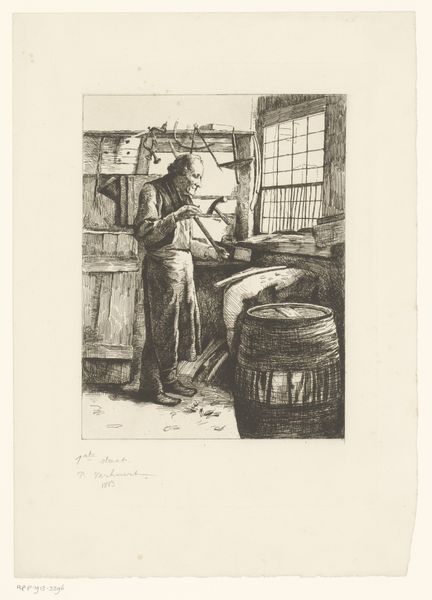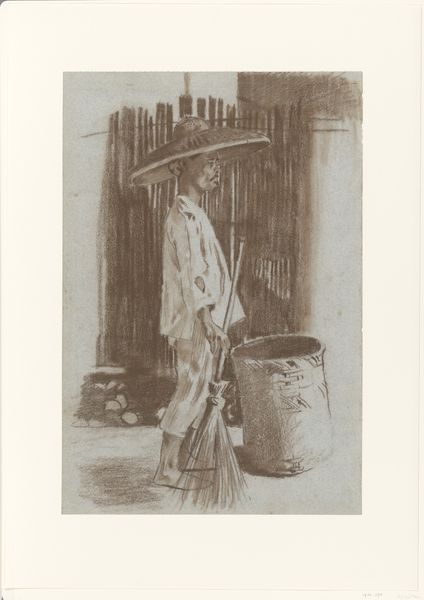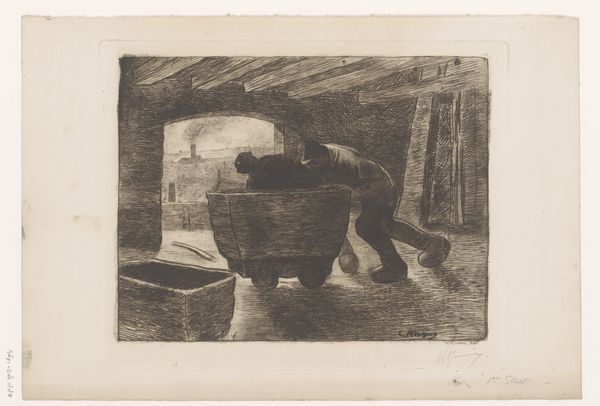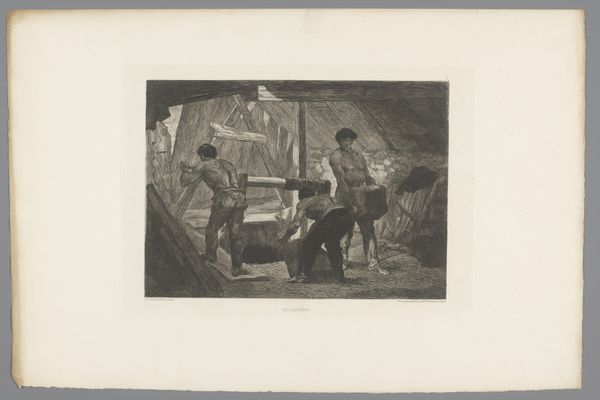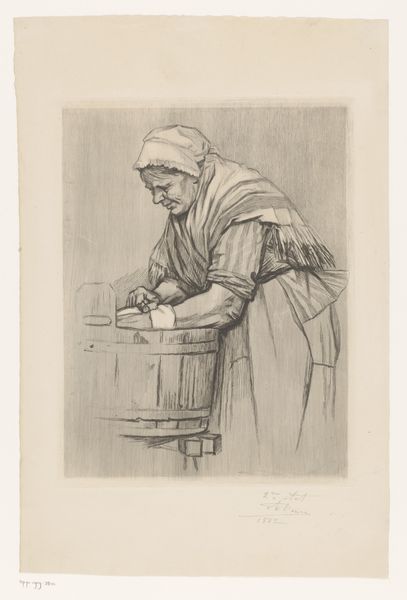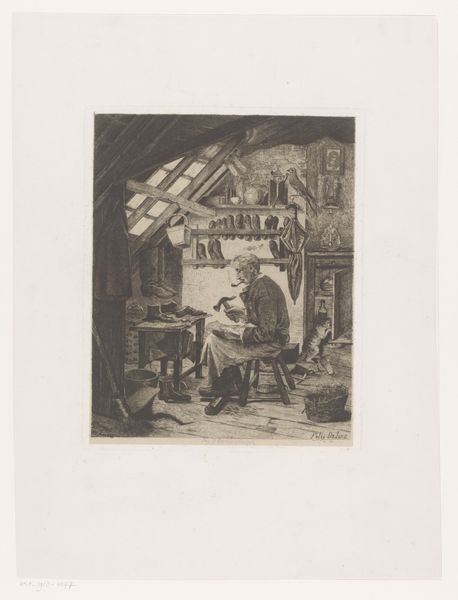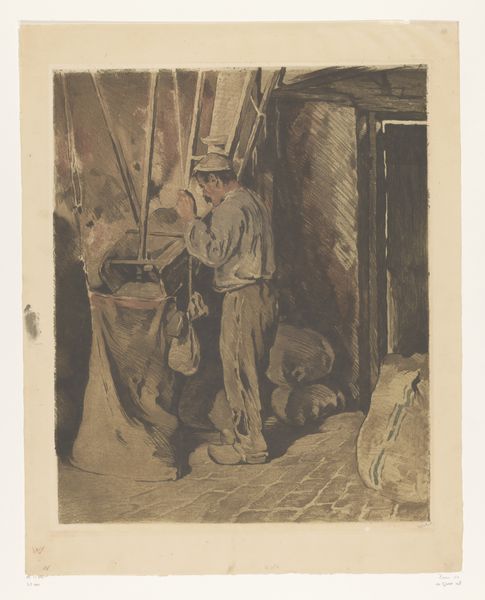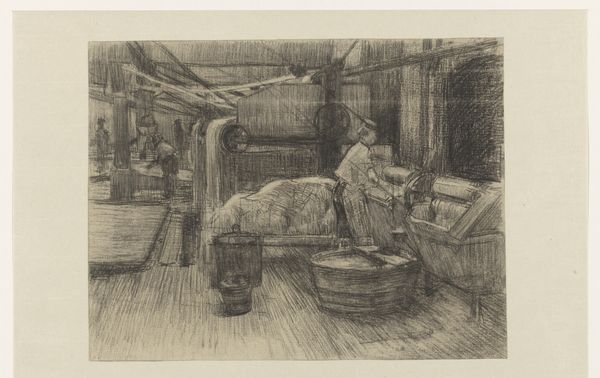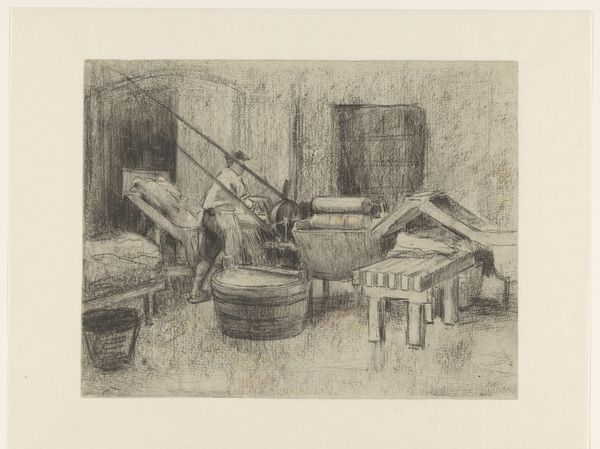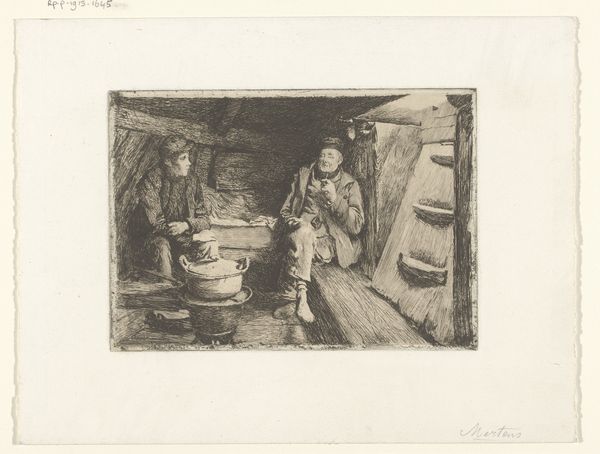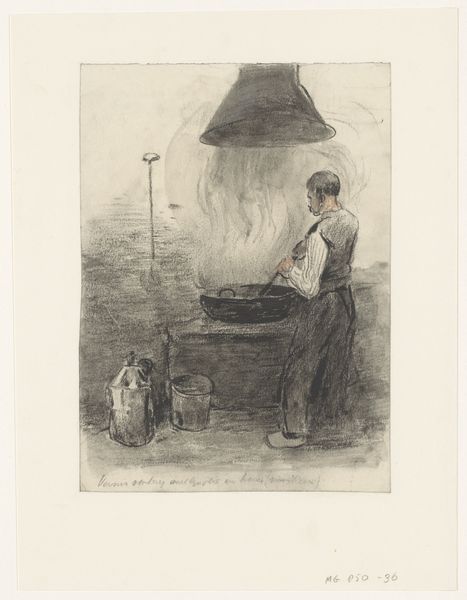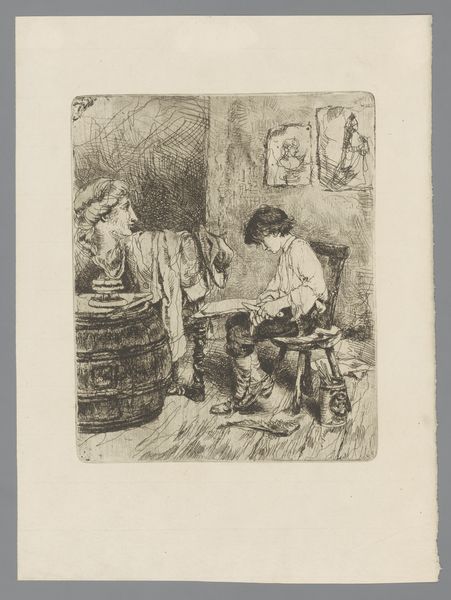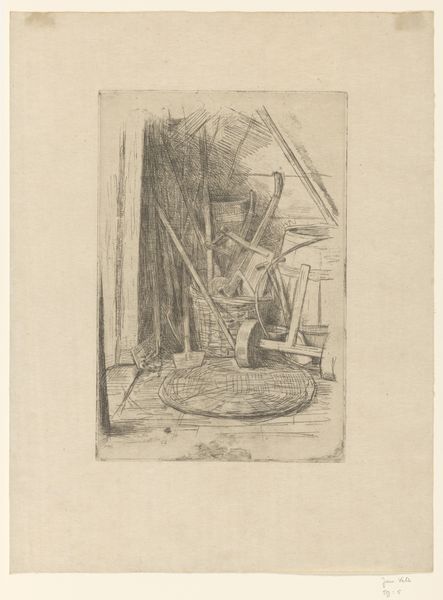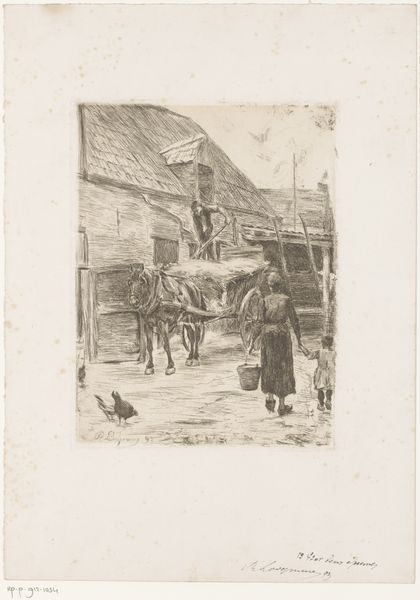
drawing, pencil
#
drawing
#
dutch-golden-age
#
pencil drawing
#
pencil
#
genre-painting
#
realism
Dimensions: height 360 mm, width 277 mm
Copyright: Rijks Museum: Open Domain
Editor: Here we have "In de katoenververij" – or "In the cotton dyeing mill" – a pencil drawing by Anthon Gerhard Alexander van Rappard, created sometime between 1868 and 1892. The subject matter has a stark, industrial feel. What's your read on the symbolic weight of such a scene? Curator: The setting itself, a cotton dyeing mill, speaks volumes. What was being produced there? More than likely, cloth meant for export, for sale. Consider the layers of meaning: raw material transformed into a commodity through human labor. A commodity then sold for profit... does this chain hold an implicit cultural narrative? Editor: It’s interesting to think of the image not just showing a scene, but embedding this idea of global trade networks. It's pretty subtle but thought provoking! Can we unpack some other possible meanings? Curator: Note how the figure is positioned – slightly turned away, head bowed. Is there a sense of anonymity? Van Rappard seems interested in a social commentary: the representation of labor, yes, but possibly also of alienation? Does the lack of light, coupled with all those tubs, contribute to such feelings? Editor: It does evoke those feelings. I was only considering the aesthetic at first but there’s more depth than meets the eye, definitely! Curator: The choice of subject and medium can offer insight into the artist's message. What emotions or ideas would the viewer carry away? This work allows a tangible connection with labor and industry's rise at that time. Editor: That's very true, you've broadened my perspective to seeing the cultural story held within what seemed a simple sketch. Curator: Likewise. Considering all of the symbolic potential enriches the experience so very much.
Comments
No comments
Be the first to comment and join the conversation on the ultimate creative platform.
